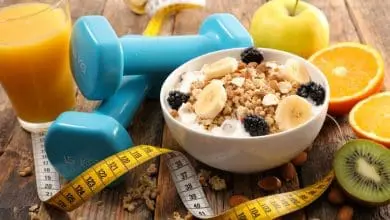How To Control Blood Sugar Levels In Everyday Life?
Type 2 diabetes is a disease that develops over time and often goes undiagnosed for a long time.
That’s why it’s always a good idea to keep our blood sugar at optimal levels.
This not only prevents the onset of type 2 diabetes but also reduces inflammation, improving physical and mental health and overall health.
Carbohydrates taken from food are converted into glucose more or less quickly.
When blood glucose levels rise, the pancreas produces insulin to lower them, making it easier for glucose to enter cells.
Decreased insulin sensitivity is a hallmark of type 2 diabetes.
How to control blood sugar levels?
A walk after a meal
A 20-minute walk after each main meal leads to a significant reduction in blood sugar levels.
There is no easier way to prevent type 2 diabetes.
This practice has also been used successfully in gestational diabetes to keep maternal and fetal blood sugar levels within healthy limits.
Physical activity involving the muscles of the legs
The legs are our largest muscle group, they consume significant amounts of sugar in the form of glycogen, which is burned during physical activity.
In addition to walking, you can also do specific leg exercises.
For example, you can do regular squats to deplete your sugar reserves.
For example, one may always choose to take the stairs instead of using the elevator, even if it is difficult at first.
Fiber and vinegar
It is recommended to take at least 40 grams of fiber.
This number refers only to the amount of fiber, not the weight of the whole high-fiber food.
For example, a pear weighs about 200 g and provides 7 g of fiber.
It is recommended to add 1-2 teaspoons of vinegar to food.
A salad with vinegar and olive oil combined with a main course high in vegetables, whole grains, and legumes protects against sharp rises and falls in blood sugar levels.
Skipping meals
In case of fatigue and difficulty concentrating after breakfast or after dinner, it is recommended to skip a meal, observing the guidelines for intermittent fasting.
80% of people are more insulin sensitive in the morning and therefore can metabolize breakfast better, but the remaining 20% can metabolize dinner better.
It is important to determine how the body reacts to eating at certain times and to consider skipping breakfast or dinner.
In any case, for effective carbohydrate metabolism, it is recommended that lunch be before 3:00 p.m., and dinner before 8:00 p.m., and the proportion of carbohydrates at dinner should be minimal.
Avoiding fast sugars
You can exclude the following foods from the daily menu:
- Products made with white flour;
- Energy bars often contain added sugars and fats;
- Sweetened fruit yogurt;
- Sweetened coffee with milk;
- Non-alcoholic and energy drinks.
More grains
Legumes such as beans, lentils, and the like have a positive effect on blood sugar.
According to this, legumes reduce not only the immediate rise in blood sugar but also the rise caused by the next meal.
As a result, legumes have a preventive effect on insulin resistance and type 2 diabetes.
Adequate water intake
Blood sugar levels are also affected by adequate fluid intake.
Hydration makes it easier for the kidneys and cells to work, so people who drink enough water have a lower risk of developing diabetes.
It is recommended to drink 1.5 liters of water daily, but the appropriate amount depends on body weight, environmental temperature and humidity, and level of physical activity.
These measures do not replace medical treatment of diabetes, they can only have a preventive effect and complement the complex therapy of type 2 diabetes.
References:
https://www.cuerpomente.com/salud-natural/tratamientos/7-remedios-caseros-para-bajar-azucar-sangre_9958


